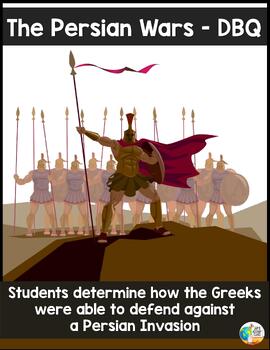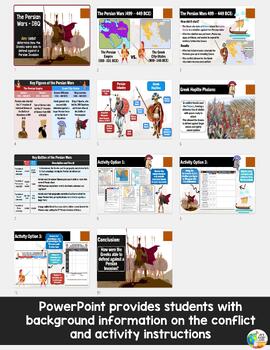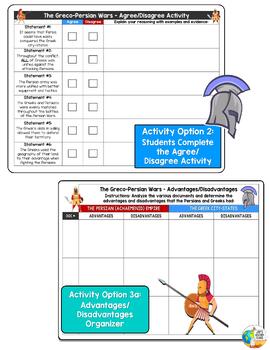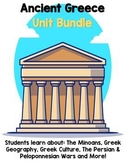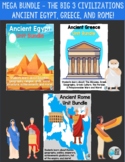The Persian Wars - DBQ Activity
- Zip
- Internet Activities
- Easel Activity
What educators are saying
Also included in
- Greece Unit Bundle:I am very excited that this Greek Unit bundle now available! This unit is filled with engaging resources and visuals for your students. Topics in this unit bundle include:The Geography of GreeceThe Minoan CivilizationComparing Athens and SpartaThe Persian WarsThe Persian Wars DPrice $36.99Original Price $68.86Save $31.87
- Ancient Egypt, Greece, and Rome Mega BundleThis Mega Bundle includes 3 best selling Units from Jay's History Class.36 Lessons and 2 projects!Ancient Egypt Unit Bundle - 13 lessons & 1 projectAncient Greece Unit Bundle - 9 lessons & 1 projectAncient Rome Unit Bundle - 14 lessonsEach lesson isPrice $99.99Original Price $177.63Save $77.64
Description
The Greco-Persian Wars - DBQ
The main objective of this activity is to have students determine how the Greeks won the Persian Wars by analyzing various maps and sources
To start the lesson, there is an 11 slide PowerPoint that contains:
- Background information on the Persian Wars
- Key figures of the Persian Wars: Darius I, Xerxes I, Miltiades, and Leonidas
- A Comparison of Persian and Greek Soldiers
- An explanation of the Greek phalanx tactic
- Chart of key battles of the conflict: Marathon, Thermopylae, Salamis, and Platea
- Instructions for all activity options
- Conclusion question
For the activities, there are three different options based on a 6 document DBQ
Activity Options Include:
Activity Option 1 - DBQ: Students answer the comprehension and analysis questions based on the documents
Activity Option 2 – Agree/Disagree Activity: Students examine the statements and determine if they agree/disagree with them. They then use evidence from the documents to explain their reasoning.
Activity Option 3 – Advantages and Disadvantages Activity – Students assess Persia's and Greece's advantages and disadvantages.
- Version A: Graphic organizer to categorize the advantages and disadvantages students notice from each document
- Version B: Worksheet where students determine if the Persians or Greeks had the advantage for each of the categories
Full Keys are provided for each activity option!
This lesson has been adapted for digital learning. Students can use apps such as LuminPDF or Dochub to complete and submit the fillable PDF files.
View a video tutorial on how to integrate these digital PDFs into Google Classroom here!

